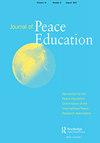Schoolwide critical restorative justice
IF 1.3
Q3 EDUCATION & EDUCATIONAL RESEARCH
引用次数: 0
Abstract
ABSTRACT How can restorative justice, an increasingly common alternative to zero tolerance discipline, serve as an opportunity to both close the racial discipline gap and promote more critical awareness of structural inequality? Using Knight and Wadhwa’s (2014) concept of critical restorative justice, I analyzed interviews with youth leaders and staff at one urban charter high school who strove to implement schoolwide restorative justice practices with an explicit lens toward resisting structural oppression and the schools to prison pipeline. Despite evidence of this explicit commitment, participants still tended to favor exclusionary discipline, particularly to maintain order. It may benefit leaders to anticipate the countervailing pressures they will encounter as they try to enact restorative justice practices within districts and communities that are accustomed to punishment and order as markers of ‘good’ leadership. There also needs to be a greater emphasis on the words and deeds that contribute to ‘critical restorative justice,’ since restorative justice is so often discussed as a means for reducing the schools to prison pipeline without detailed attention to how it will disrupt traditional patterns of power and discipline in school.全校范围的批判性恢复性司法
摘要恢复性司法作为零容忍纪律的一种越来越常见的替代方案,如何为缩小种族纪律差距和提高对结构性不平等的批判性认识提供机会?利用Knight和Wadhwa(2014)提出的关键性恢复性司法概念,我分析了对一所城市特许高中的青年领袖和工作人员的采访,他们努力在学校范围内实施恢复性司法实践,明确抵制结构性压迫和从学校到监狱的管道。尽管有证据表明这种明确的承诺,但参与者仍然倾向于排斥性纪律,特别是为了维持秩序。当领导人试图在习惯于将惩罚和秩序作为“良好”领导标志的地区和社区内实施恢复性司法实践时,预测他们将面临的反制压力可能会使他们受益。还需要更加重视有助于“关键性恢复性司法”的言行,因为恢复性司法经常被讨论为减少从学校到监狱的管道的一种手段,而没有详细关注它将如何破坏学校的传统权力和纪律模式。
本文章由计算机程序翻译,如有差异,请以英文原文为准。
求助全文
约1分钟内获得全文
求助全文

 求助内容:
求助内容: 应助结果提醒方式:
应助结果提醒方式:


